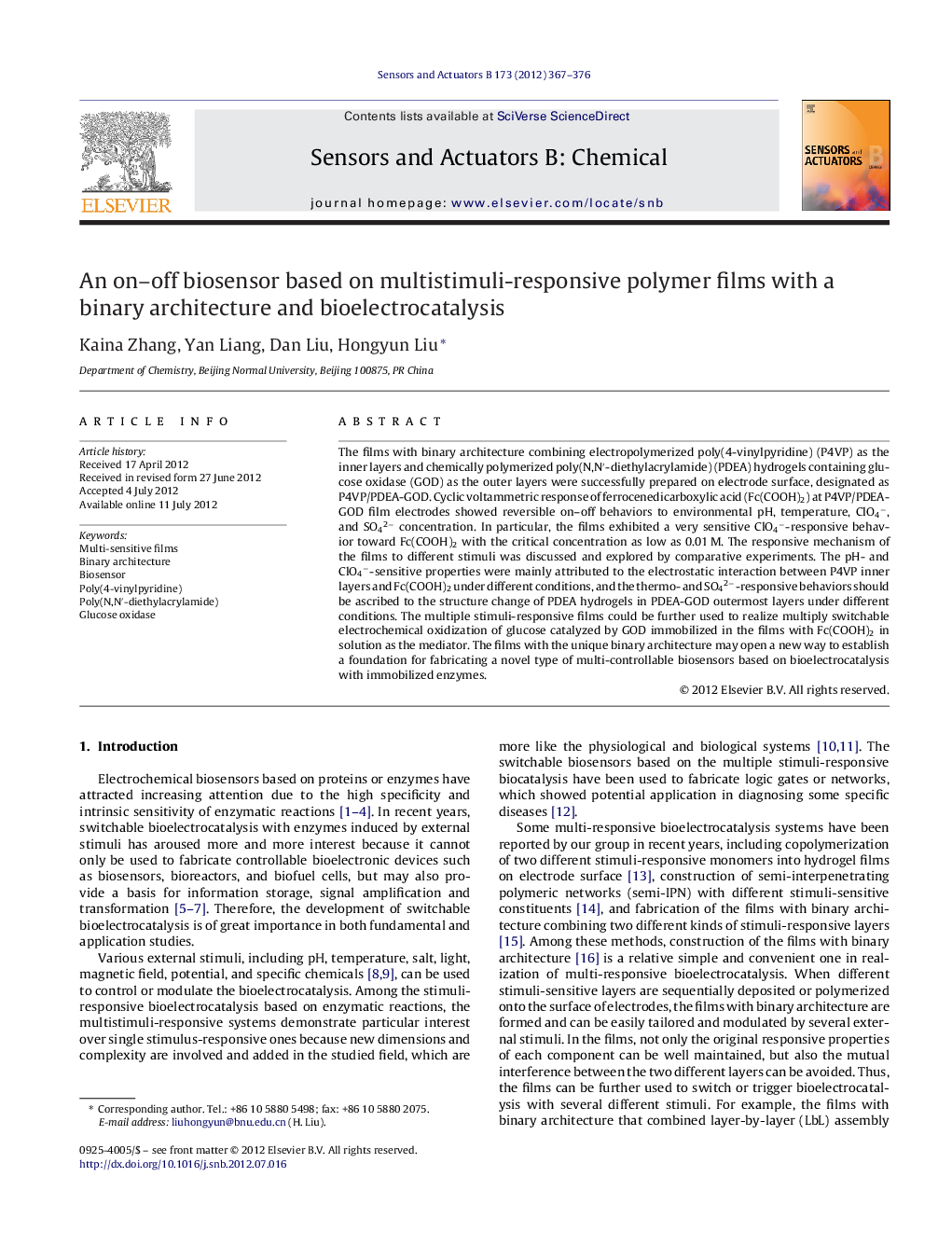| Article ID | Journal | Published Year | Pages | File Type |
|---|---|---|---|---|
| 7149587 | Sensors and Actuators B: Chemical | 2012 | 10 Pages |
Abstract
The films with binary architecture combining electropolymerized poly(4-vinylpyridine) (P4VP) as the inner layers and chemically polymerized poly(N,Nâ²-diethylacrylamide) (PDEA) hydrogels containing glucose oxidase (GOD) as the outer layers were successfully prepared on electrode surface, designated as P4VP/PDEA-GOD. Cyclic voltammetric response of ferrocenedicarboxylic acid (Fc(COOH)2) at P4VP/PDEA-GOD film electrodes showed reversible on-off behaviors to environmental pH, temperature, ClO4â, and SO42â concentration. In particular, the films exhibited a very sensitive ClO4â-responsive behavior toward Fc(COOH)2 with the critical concentration as low as 0.01Â M. The responsive mechanism of the films to different stimuli was discussed and explored by comparative experiments. The pH- and ClO4â-sensitive properties were mainly attributed to the electrostatic interaction between P4VP inner layers and Fc(COOH)2 under different conditions, and the thermo- and SO42â-responsive behaviors should be ascribed to the structure change of PDEA hydrogels in PDEA-GOD outermost layers under different conditions. The multiple stimuli-responsive films could be further used to realize multiply switchable electrochemical oxidization of glucose catalyzed by GOD immobilized in the films with Fc(COOH)2 in solution as the mediator. The films with the unique binary architecture may open a new way to establish a foundation for fabricating a novel type of multi-controllable biosensors based on bioelectrocatalysis with immobilized enzymes.
Related Topics
Physical Sciences and Engineering
Chemistry
Analytical Chemistry
Authors
Kaina Zhang, Yan Liang, Dan Liu, Hongyun Liu,
